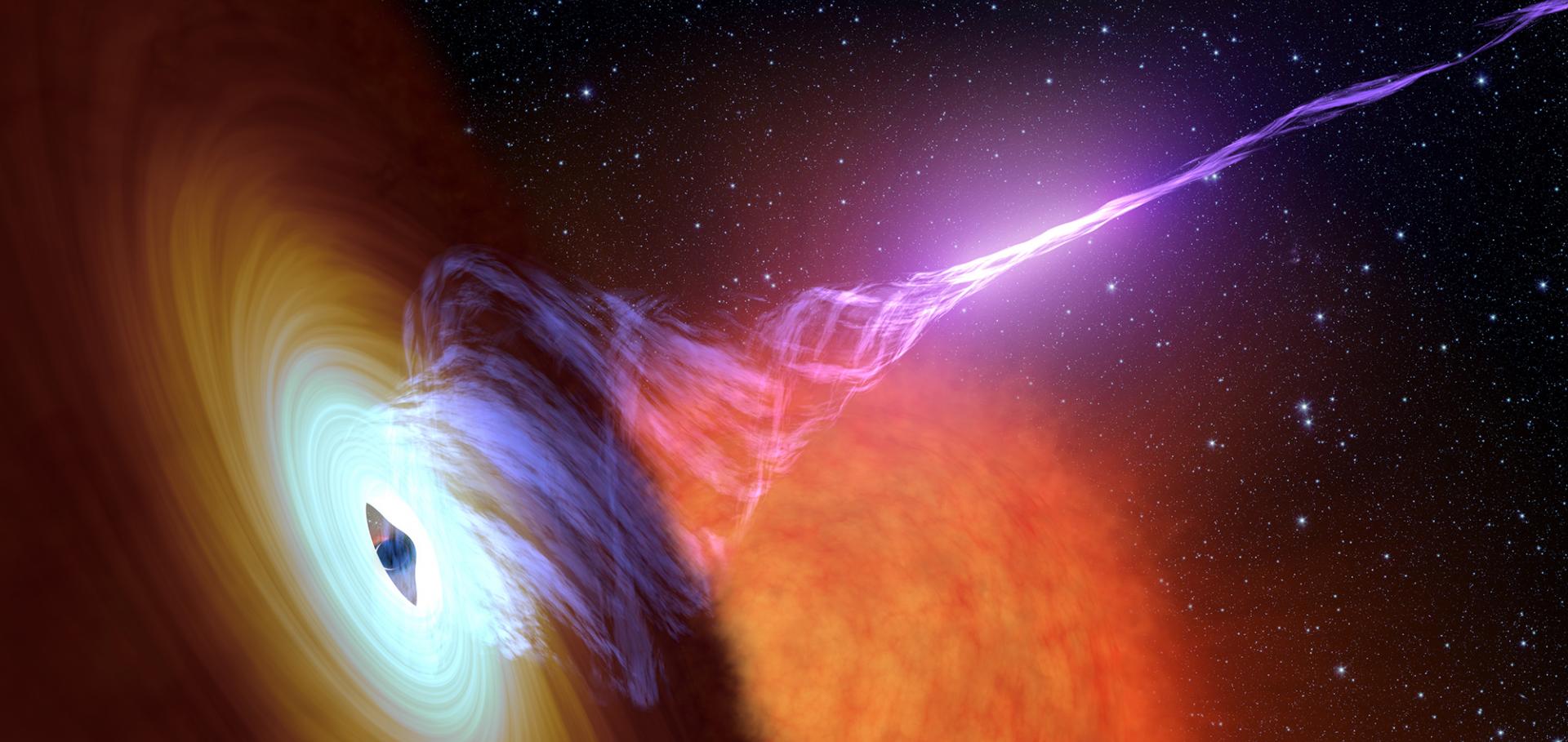The 2019 outburst of the 2005 classical nova V1047 Cen: a record breaking dwarf nova outburst or a new phenomenon?
(2021)
The varying kinematics of multiple ejecta from the black hole X-ray binary MAXI J1820 + 070
Monthly Notices of the Royal Astronomical Society Oxford University Press (OUP) 505:3 (2021) 3393-3403
THEZA: TeraHertz Exploration and Zooming-in for Astrophysics
Experimental Astronomy Springer Nature 51:3 (2021) 559-594
The hybrid radio/X-ray correlation of the black hole transient MAXI J1348-630
Monthly Notices of the Royal Astronomical Society Oxford University Press 505:1 (2021) L58-L63
Abstract:
Black hole (BH) low mass X-ray binaries in their hard spectral state are found to display two different correlations between the radio emission from the compact jets and the X-ray emission from the inner accretion flow. Here, we present a large data set of quasi-simultaneous radio and X-ray observations of the recently discovered accreting BH MAXI J1348–630 during its 2019/2020 outburst. Our results span almost six orders of magnitude in X-ray luminosity, allowing us to probe the accretion–ejection coupling from the brightest to the faintest phases of the outburst. We find that MAXI J1348–630 belongs to the growing population of outliers at the highest observed luminosities. Interestingly, MAXI J1348–630 deviates from the outlier track at LX ≲ 7 × 1035(D/2.2 kpc)2 erg s−1 and ultimately rejoins the standard track at LX ≃ 1033(D/2.2 kpc)2 erg s−1, displaying a hybrid radio/X-ray correlation, observed only in a handful of sources. However, for MAXI J1348–630 these transitions happen at luminosities much lower than what observed for similar sources (at least an order of magnitude). We discuss the behaviour of MAXI J1348–630 in light of the currently proposed scenarios and highlight the importance of future deep monitorings of hybrid correlation sources, especially close to the transitions and in the low luminosity regime.The Varying Kinematics of Multiple Ejecta from the Black Hole X-ray Binary MAXI J1820+070
(2021)


